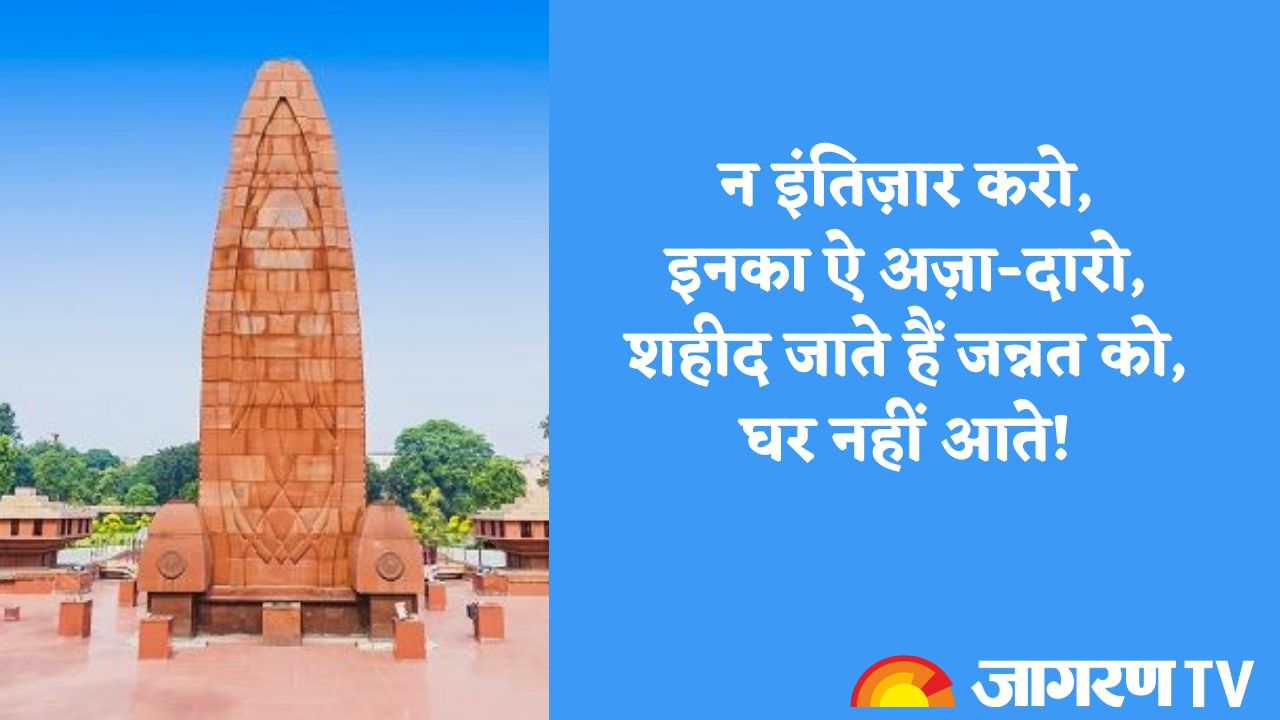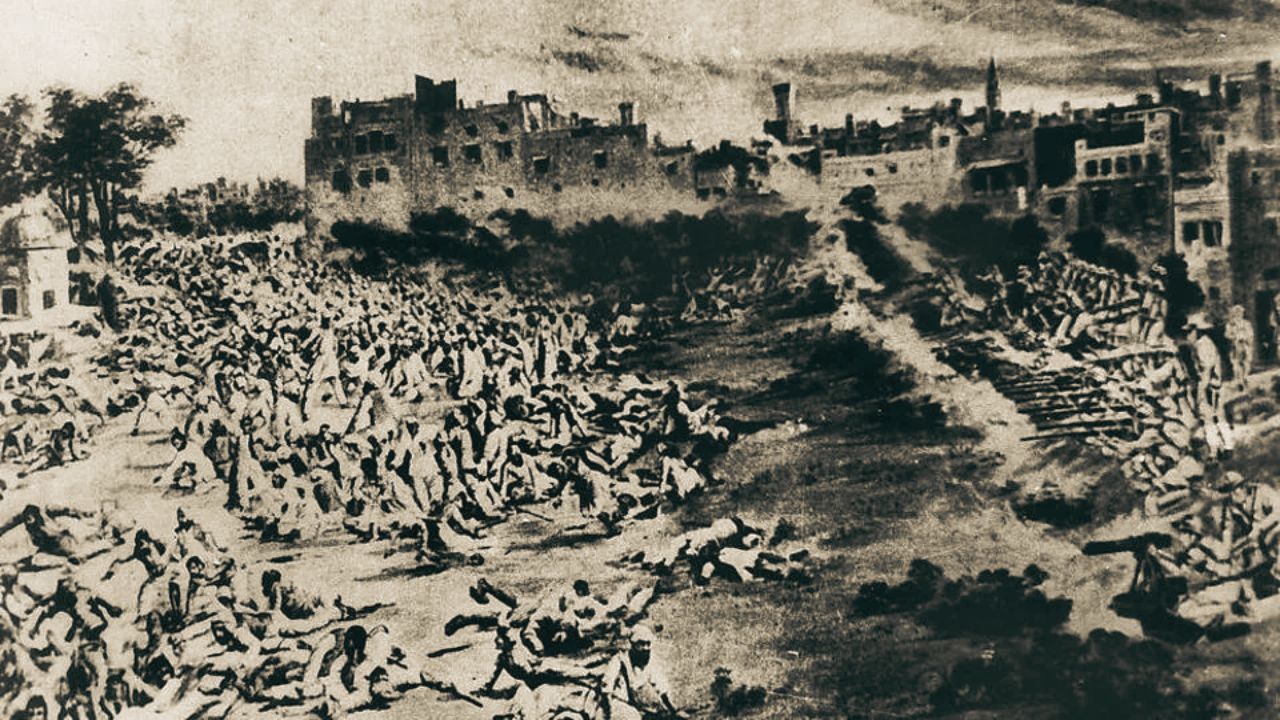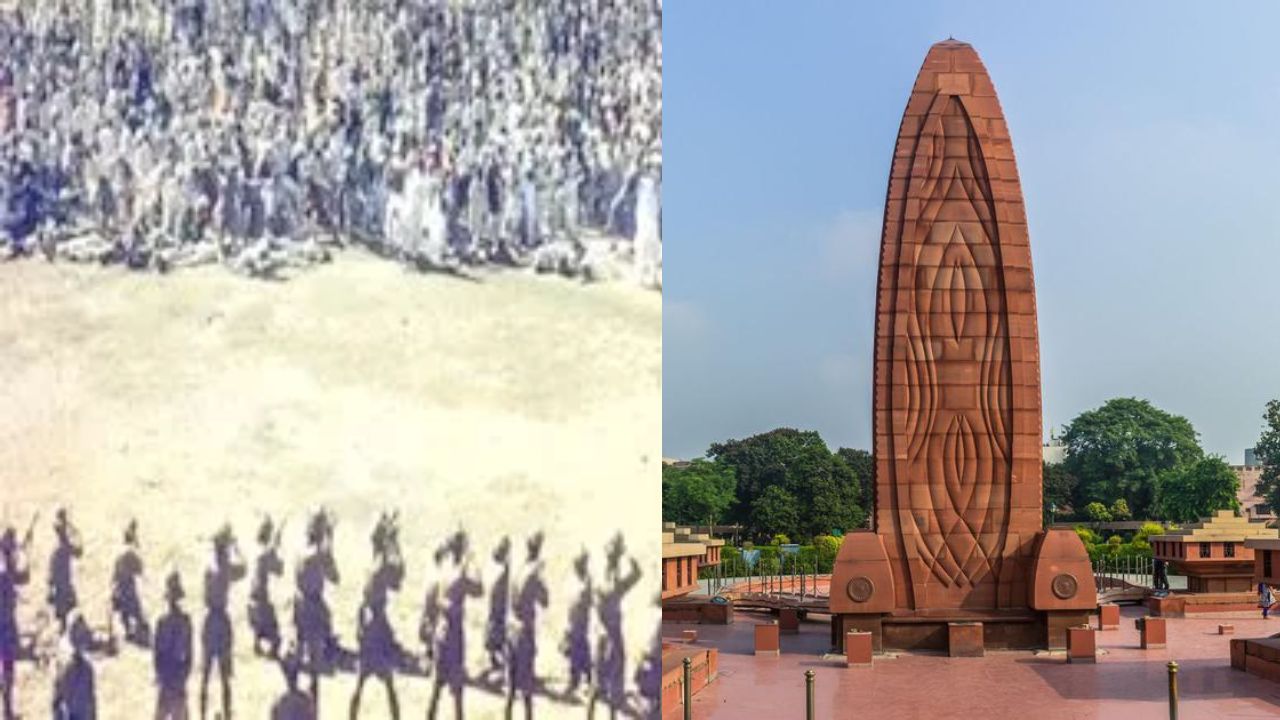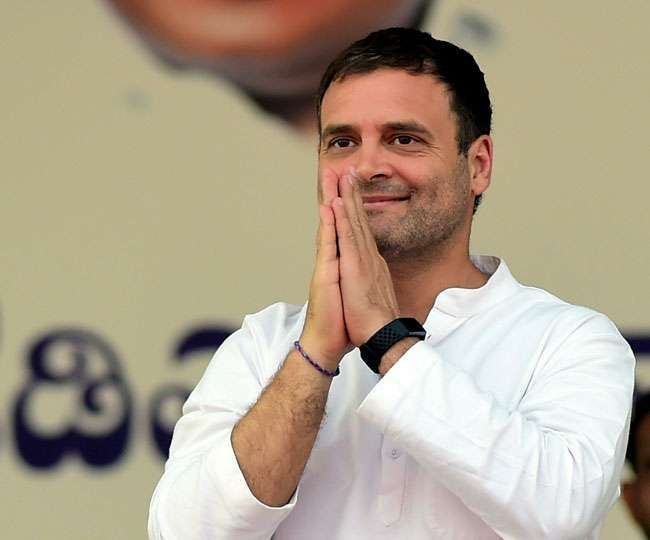Jallianwala Bagh Massacre: 103 years of tragedy
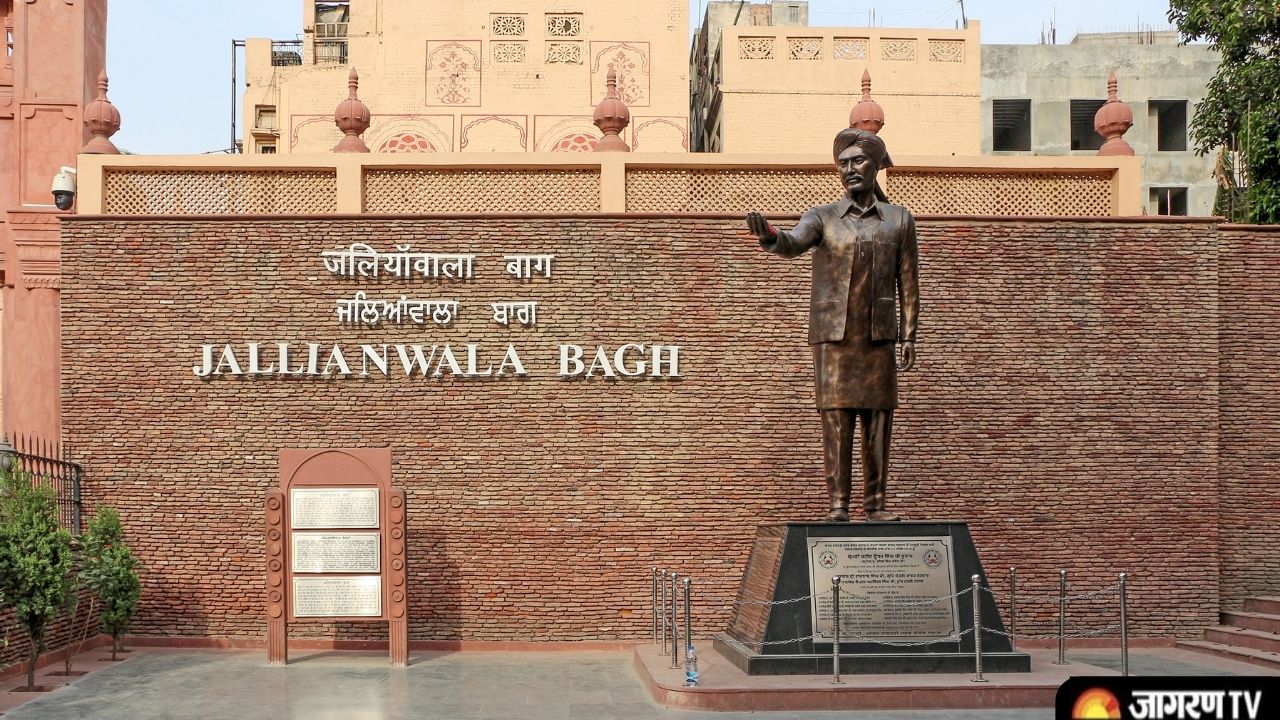
The Jallianwala Bagh massacre of 1919 in Amritsar as a "shameful scar" on British Indian history. It is also called a Massacre of Amritsar and one of the most tragic yet landmark events in the history of India. This massacre exposed the inhuman approach of the British when the British troop cold-bloodedly open fire into an unarmed crowd without any warning by General Dyer which had assembled at the enclosed park for the public meeting that was banned.
A cartoon by Eduard Thöny for German satirical magazine Simplicissimus in Jan 1920. This is first ever visual representation of Jallianwala Bagh massacre. This however is not very accurate. #History pic.twitter.com/s0q4NeYy06
— Amaan (@amaanbali) February 20, 2022
About Jallianwala Bagh Maasacre
On 13 April 1919, people gathered at Jallianwala Bagh (Amritsar) to protest against the arrest of the two nationalist leaders, Satya Pal and Dr Saifuddin Kitchlew. Suddenly, a British military officer, General Dyer, entered the park with his troops. Without even giving a warning to the people to disperse, he ordered his troops fired at the unarmed crowd for ten minutes and when their ammunition was exhausted, they left. In those ten minutes, according to the estimates of the congress, about a thousand persons were killed and about 2000 wounded. The bullet marks can be still seen on the walls of the Jallianwala Bagh which is now a national memorial.
THE ELITE FAMILIES OF PUNJAB AND THE JALLIANWALA BAGH MASSACRE (THREAD)
— Mankamal Singh (@MankamalSingh) October 24, 2021
How does the Jallianwala Bagh massacre expose the lineages of current political elite leadership in Punjab?
1/ pic.twitter.com/9ksAyHzYoi
The massacre had been a calculated act and Dyer declared with pride that he had done it to produce ‘moral effect’ on the people and that he had made up his mind that he would shoot down all men if they were going to continue the meeting. He had no regrets. He went to England and some Englishmen collected money to honour him. Others were shocked at this act of brutality and demanded an enquiry. A British newspaper called it as one of the bloody massacres of modern history.
About 21 years later, on 13 March 1940, Udham Singh, an Indian revolutionary, shot Michael O’Dwyer dead who was the Lt. Governor of Punjab at the time of the Jalliawala Bagh massacre. The massacre aroused the fury of the Indian people and the government replied with further brutalities. People in Punjab were made to crawl on the streets. They were put in open cages and flogged. Newspapers were banned and their editors put behind the bars or deported. A reign of terror, like the one that followed the suppression of the revolt of 1857, was let loose.
Shaheed Udham Singh (Dec 26 1899 – July 31 1940) He avenged the Jallianwala Bagh massacre. pic.twitter.com/YMpevlJRoA
— Learn Punjabi (@learnpunjabi) December 26, 2021
How many people died in the Jallianwala Bagh Massacre?
There were no official data on the number of deaths during the Jallianwala Bagh Massacre. But on the official enquiry of the British revealed that there were 379 deaths and the Congress quoted more than 1000 people died in the massacre.
The last known survivor of the Jallianwala Bagh Massacre was Bapu Shingara Singh, died in 2009, at the age of 113.
— Clio's Chronicles (@CliosChronicles) April 13, 2021
He was in his early 20s when the incident took place April 13, 1919. pic.twitter.com/MbYqXGAL6U


